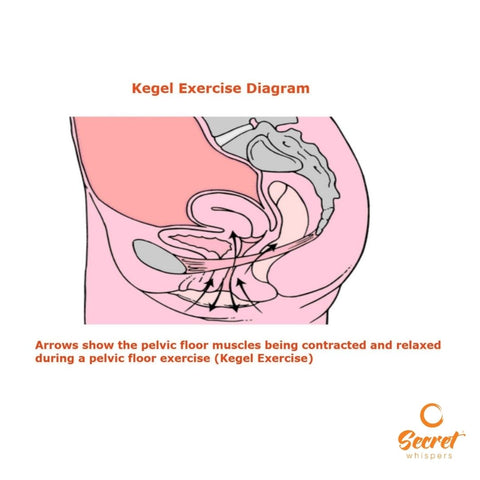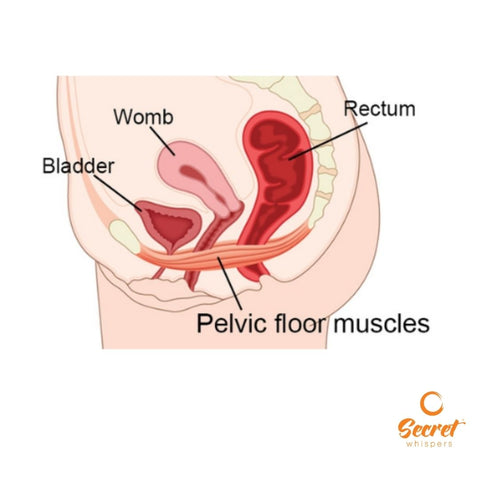Running with a Prolapse: Top Tips & Advice
Pelvic Organ Prolapse, also referred to a POP, can feel like something inside your vagina in coming down, a bit like a dislodged tampon. It can be very uncomfortable and tends to get worse as the day progresses. Some women say that it feels like they are sitting on a tennis ball. Others have pain and discomfort during sex, and backache is another common issue.
There are different 4 main types of prolapses and it is possible to have more than one of these at the same time.
Sadly, far too many women give up exercise and running because of a prolapse. However, we will share some tips, tricks and useful information so you can keep running, even with a prolape.
Does Running Weaken Your Pelvic Floor?
Running is a high impact sport and, like all high impact sports, can weaken our pelvic floors. This is because when you run, it can put pressure on the pelvic area and the muscles which protect it.
How Does Running Affect Your Pelvic Floor?
The pelvic floor is a group of muscles that runs from the front of the pelvis to the tailbone and coccyx at the back. The pelvic floor looks like and acts like a hammock, holding up the pelvic organs (the bladder, bowel and uterus).
There are openings in your pelvic floor for different parts of your anatomy to pass through. In women, the 3 openings are the urethra, the vagina and the anus, and the pelvic floor wraps firmly around them.
Generally, athletes think that they have a strong pelvic floor purely because they work out regularly. However we know this is not always the case.
Regular high intensity running is one of the risk factors which can lead to pelvic floor damage. Our pelvic floors take all the weight of our body and, over a prolonged amount of time, this excess pressure is what can cause the pelvic floor to weaken.

Can Running Cause a Prolapse or Make It Worse?
Although running isn’t a direct cause of a weak pelvic floor, it can contribute to it. On the same note, a prolapse is a sign that you already have a weak pelvic floor and running can make it worse.
There are several factors which can influence how much running will affect your prolapse, such as your body weight, your original pelvic strength, how fast and far you run, the surface you run on and recovery time between runs. Because your pelvic floor is already weak, the pressure can force your prolapse to move downwards if not supported by any other means.
We always advise that you see a pelvic floor physio who can assess and advise what is best for you. In addition to this, understanding how your pelvic floor works and why doing your Kegels (pelvic floor exercise) is so important will help. You can read this previous blog to learn how to do your Kegel exercises – The Ultimate Guide to a Stronger Pelvic Floor – and shop our pelvic floor toner online.
Tips For Running With Prolapse
-
Play around with your speed, by reducing how fast you run, this may lessen the impact on your pelvic floor.
-
Change surfaces. Avoid the consistent hard surfaces like roads and concrete pavements, and instead go for grass or gravel..
-
Aqua Jogging or water running is a form of low-impact exercise that is used as a method of rehabilitation for runners with injuries as it allows the muscles to be exercised without interference from gravity.
-
Consult a physiotherapist - physiotherapy is proven to improve pelvic floor strength and tone your pelvic floor.
-
Manage your body weight.
-
Do your Kegels with Kegel Weights – Our pelvic floor toner is designed to strengthen your pelvic floor. Just 15 minutes a day is all that is needed.

What Exercises to Avoid with a Prolapse
If you have a prolapse it’s better to avoid all high impact forms of exercise until you build back up your pelvic floor muscles. Some exercises to avoid or minimise include:
- Any heavy lifting weights, especially over shoulder height.
- Dead lifting.
- Bicycle legs.
- Leg presses.
- Crunches.
- Abdominal exercise machine.
- High impact aerobics, which includes jumping and sit ups.
All these exercises cause intra-abdominal pressure which can affect you pelvic floor so, swap for some low impact exercises such as:
- Light weights on high reps (avoid holding your breath).
- Cycling.
- Aerobics and water aerobics.
Can I Run After Prolapse Surgery?
You may think you're ready to return to running but always wait for approval from your surgeon. Some women will receive approval within 6-8 weeks after surgery but all our bodies are different and will be ready at different times, so don’t be disheartened.
Often women will believe they’re fully healed after 6 weeks and return to their previous workout schedule like nothing has changed. In reality, during this period of 6 weeks your stitches are holding your pelvic floor tissue together. So it is crucial to avoid putting unnecessary pressure upon it. Complete tissue healing usually takes about 3 months or in some cases longer.

Exercises Safe for Prolapse
Probably the safest exercise for prolapse are Kegel exercises. Kegels are exercises which are clinically proven to be effective nonsurgical treatment for pelvic floor weakness. They consist of repeatedly contracting and relaxing the muscles that form the pelvic floor.
At Secret Whispers when you buy a Kegel Kit you receive a free e-book with everything you need to know about doing the Kegels correctly and a 6-step program. We also have a closed Facebook Group you can join for support and advice.
Alternatively, low impact cardiovascular fitness like walking, swimming, water walking and low impact aerobics or pelvic floor safe exercises such as seated bicep curls, clam exercises (With your hands placed behind your head, simultaneously lift your legs off the floor while also lifting your shoulders off the floor)¹ and bridge exercises.
If you would like to know more, here are a few blogs you can read:
The 4 main types of prolapse with diagrams
I think I have a prolapse – what now?
The Ultimate Guide to a Strong Pelvic Floor
You can also join our fabulous Women's only private Facebook Group.
Fancy a freebie? Download our FREE guide The easy way to get a stronger pelvic floor.
Any questions? Just email us at support@secretwhispers.co.uk and we will get straight back to you.










